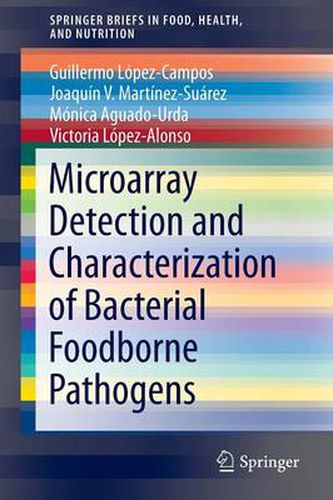Readings Newsletter
Become a Readings Member to make your shopping experience even easier.
Sign in or sign up for free!
You’re not far away from qualifying for FREE standard shipping within Australia
You’ve qualified for FREE standard shipping within Australia
The cart is loading…






This title is printed to order. This book may have been self-published. If so, we cannot guarantee the quality of the content. In the main most books will have gone through the editing process however some may not. We therefore suggest that you be aware of this before ordering this book. If in doubt check either the author or publisher’s details as we are unable to accept any returns unless they are faulty. Please contact us if you have any questions.
This is a review of recent advances on the use of DNA microarray for diagnosing foodborne pathogens. Rapid detection and characterization of foodborne pathogens is critical for food safety. Many relevant technologies have been intensively developed to date. DNA microarray technology offers a new way to food safety involving pathogen detection and characterization. DNA microarray can be used for detection and characterization of pathogens by analyzing hybridization patterns between capture probes and nucleic acids isolated from food samples or bacteria. It allows more rapid, accurate, and cost-effective detection of pathogens compared with traditional approaches of cultivation or immuno-assays. The application of DNA microarrays to different foodborne bacteria, such as Campylobacter, Salmonella, Listeria monocytogenes, or Shiga toxin producing Escherichia coli, will improve their rapid identification and characterization of their genetic traits (e.g., antimicrobial resistance, virulence). As bacterial foodborne diseases are posing more serious threats to public healthcare, development of rapid and accurate methods for pathogen detection and characterization is critical to their proper control at the earliest time.
$9.00 standard shipping within Australia
FREE standard shipping within Australia for orders over $100.00
Express & International shipping calculated at checkout
This title is printed to order. This book may have been self-published. If so, we cannot guarantee the quality of the content. In the main most books will have gone through the editing process however some may not. We therefore suggest that you be aware of this before ordering this book. If in doubt check either the author or publisher’s details as we are unable to accept any returns unless they are faulty. Please contact us if you have any questions.
This is a review of recent advances on the use of DNA microarray for diagnosing foodborne pathogens. Rapid detection and characterization of foodborne pathogens is critical for food safety. Many relevant technologies have been intensively developed to date. DNA microarray technology offers a new way to food safety involving pathogen detection and characterization. DNA microarray can be used for detection and characterization of pathogens by analyzing hybridization patterns between capture probes and nucleic acids isolated from food samples or bacteria. It allows more rapid, accurate, and cost-effective detection of pathogens compared with traditional approaches of cultivation or immuno-assays. The application of DNA microarrays to different foodborne bacteria, such as Campylobacter, Salmonella, Listeria monocytogenes, or Shiga toxin producing Escherichia coli, will improve their rapid identification and characterization of their genetic traits (e.g., antimicrobial resistance, virulence). As bacterial foodborne diseases are posing more serious threats to public healthcare, development of rapid and accurate methods for pathogen detection and characterization is critical to their proper control at the earliest time.